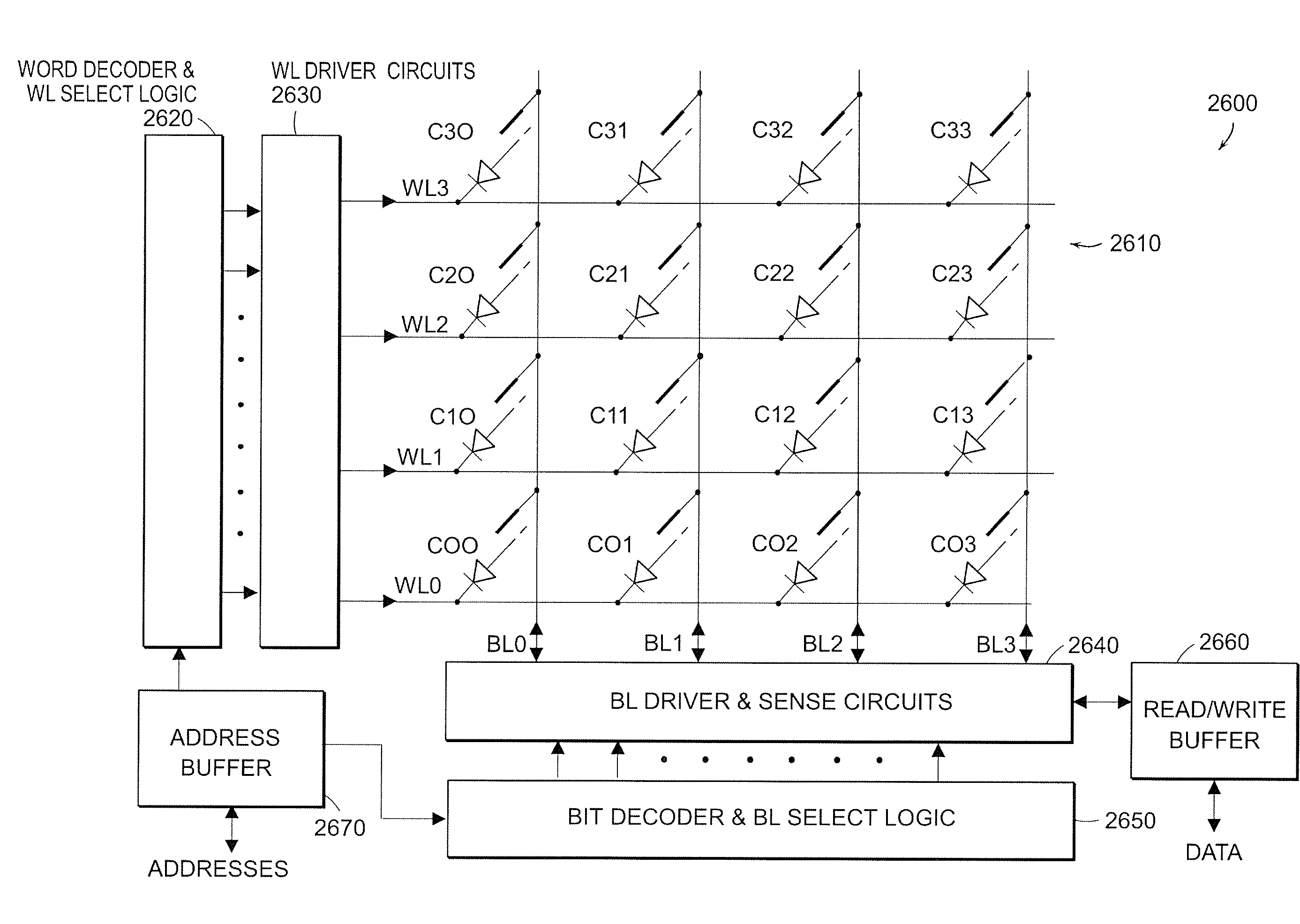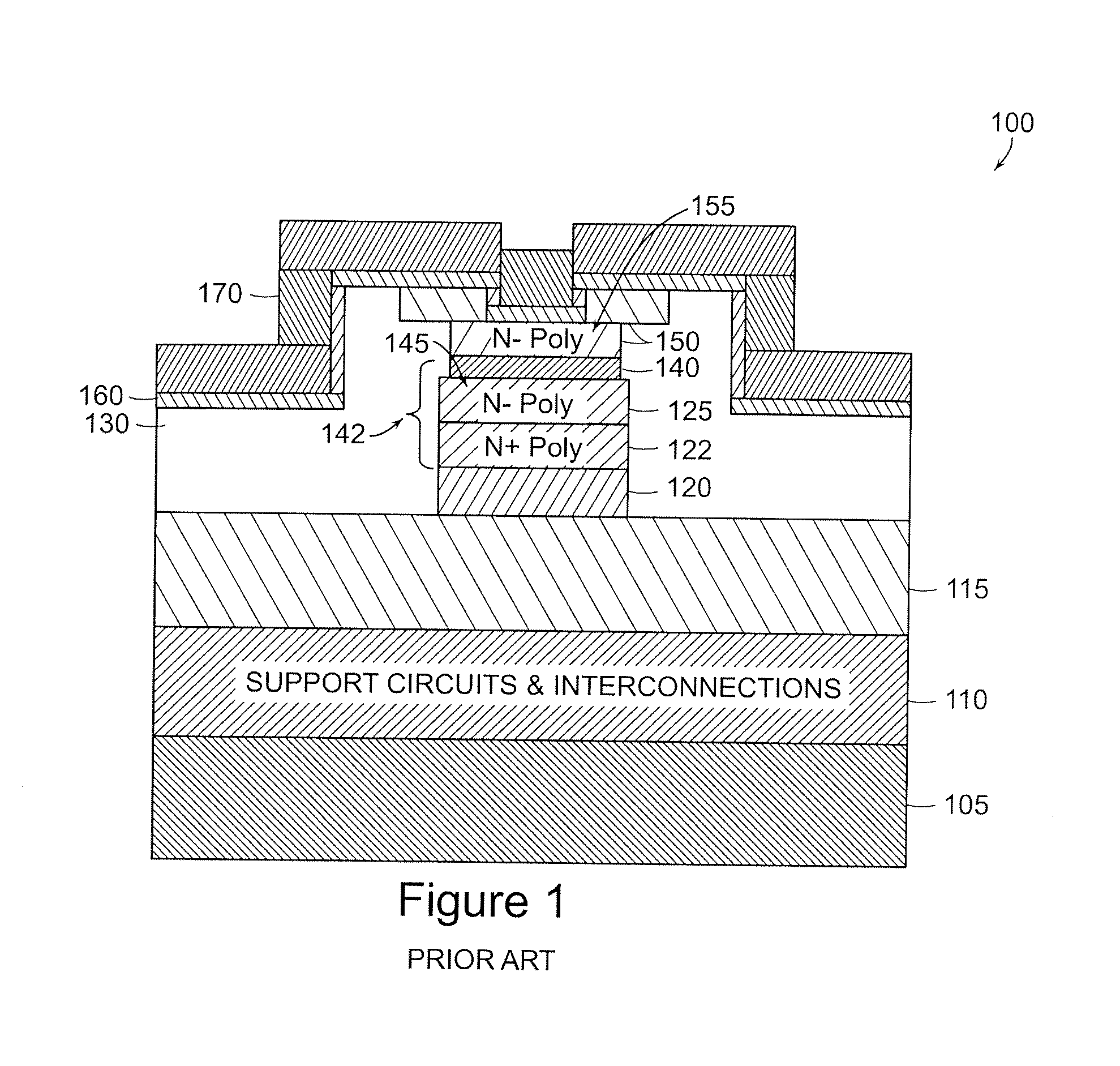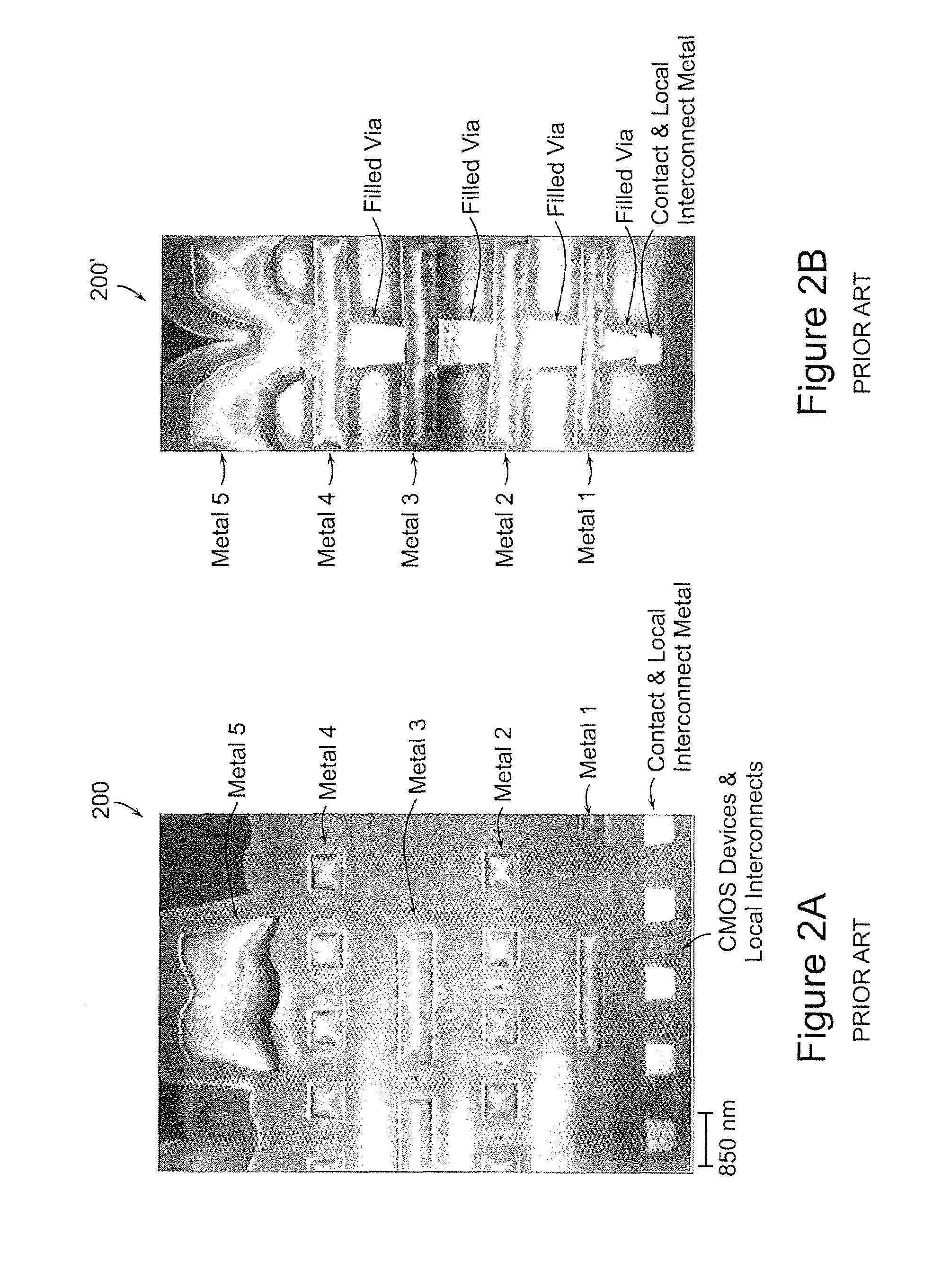Nonvolatile nanotube diodes and nonvolatile nanotube blocks and systems using same and methods of making same
a technology of nonvolatile nanotube blocks and nanotube diodes, applied in the direction of diodes, digital storage, instruments, etc., can solve the problem of limited application to otp memories, and achieve the effect of low resistance state and high resistance sta
- Summary
- Abstract
- Description
- Claims
- Application Information
AI Technical Summary
Benefits of technology
Problems solved by technology
Method used
Image
Examples
Embodiment Construction
[0151]Embodiments of the present invention provide nonvolatile diodes and nonvolatile nanotube blocks and systems using same and methods of making same.
[0152]Some embodiments of the present invention provide 3-D cell structures that enable dense nonvolatile memory arrays that include nanotube switches and diodes, can write logic 1 and 0 states for multiple cycles, and are integrated on a single semiconductor (or other) substrate. It should be noted that such nonvolatile memory arrays may also be configured as NAND and NOR arrays in PLA, FPGA, and PLD configurations for performing stand-alone and embedded logic functions as well.
[0153]Some embodiments of the present invention provide diode devices having nonvolatile behavior as a result of diodes combined with nonvolatile nanotube components, and methods of forming such devices.
[0154]Some embodiments of the present invention also provide nanotube-based nonvolatile random access memories that include nonvolatile nanotube diode device ...
PUM
 Login to View More
Login to View More Abstract
Description
Claims
Application Information
 Login to View More
Login to View More - R&D
- Intellectual Property
- Life Sciences
- Materials
- Tech Scout
- Unparalleled Data Quality
- Higher Quality Content
- 60% Fewer Hallucinations
Browse by: Latest US Patents, China's latest patents, Technical Efficacy Thesaurus, Application Domain, Technology Topic, Popular Technical Reports.
© 2025 PatSnap. All rights reserved.Legal|Privacy policy|Modern Slavery Act Transparency Statement|Sitemap|About US| Contact US: help@patsnap.com



